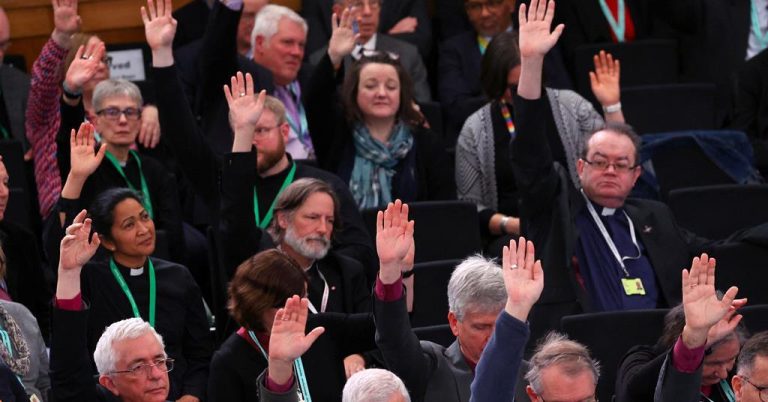
I was watching the Graham Norton Show a few weeks ago. In his opening on-camera monologue, Norton spoke about a satellite navigation glitch that keeps directing drivers down a stone staircase leading to a town’s local park. As he spoke, images emerged of cars, vans and even trucks that had tracked GPS and got stuck on these stone steps as they tried to reach their destination.
This gives a far too precise image of the Live in love and faith process. As the General Synod of the Church of England continue to debate homosexual relationships and sexual practices, I can’t count the number of times I’ve heard people say: “Just implement the decisions that have already been made” or: “We voted for it, let’s not delay.” “.
Yet little progress has been made. It was as if the Synod had voted for a turnaround but, again and again, we found ourselves stuck on the stone steps, unable to move.
Stuck on the steps
I think this “blockage” has two causes:
First of all, a failure to recognize that voting for something at Synod does not change reality.
Take an amendment proposed by Ed Shaw in the most recent discussions. He proposed inserting an acknowledgment that “for many in the Church of England, including members of the General Synod, some of the issues raised (on matters of sexual practice and the prayers of love and faith) are not issues they can simply agree on. disagree.” Ed’s amendment did not pass, but 47 percent of clergy and laity voted for it, rather proving the point.
53 percent may have opposed it, but it’s still a true statement. There are people – 47 percent of us – who can’t just agree and disagree.
The speeches and votes illustrated the deep and painful divisions that persist within the CofE.
It’s the same idea among the bishops. We learned from the newspapers preceding the General Synod that the bishops had already voted to determine that same-sex marriage is distinct from holy matrimony (20 votes to 15 – Appendix B of GS 2346). This vote took place to justify the possibility of clergy being authorized to enter into same-sex marriages without claiming to modify the doctrine of marriage.
But the fact that the bishops voted for it does not change the reality. Both legally and theological advice that the bishops received before their vote told them something very different. Twenty of them simply chose to ignore it.
Second, a failure to recognize that voting for something at the Synod does not change the reality of our constitution.
Take for example the introduction of stand-alone blessing services for same-sex couples, which had the opportunity to pass by one voice at the November Synod. In the run-up to this week’s Synod, we were told in Appendix A of the papers that there was considerable risk of legal challenge for the implementation of these services, other than using Canon B2, which requires the approval of two-thirds of the Synod. In other words, all other routes are probably illegal, but we are nowhere near the level of approval required for the one clearly legal route, according to General Synod’s own constitution.
And so – as a whole – the CofE seems well and truly stuck on the steps. Our wheels spin, we rev our engines – sometimes too hard – without being able to move in any direction.
Find a new direction
There were glimmers of hope, however. First of all, the new principal bishop, The Revd Martyn Snow, Bishop of Leicester, called for a change in tone, transparency and trust. Even if the confidence of the bishops has yet to be restored, the tone and transparency have been significantly improved, notably thanks to the example of Bishop Martyn. He has proven to be an excellent president, and with his leadership, there appears to be greater opportunity to find a path forward.
47% of us can’t just agree or disagree
Second, the new road ahead. The proposed amendments, and the speeches and votes that followed, illustrated the deep and painful divisions that persist within the CofE. However, no overall vote took place, as both those who wanted change and those who sought to stick with the teaching received were unhappy with elements of what was proposed.
Instead, a procedural motion to “move to the next step” received strong support (322 for, 69 against and 20 abstentions recorded). This decision now allows for more imagination and inventiveness as we try to chart a path forward that could satisfy both groups. It is undeniable that we are currently stuck on the stone stairs, but there is now a window before the General Synod in July where it is possible to propose a new route that all could take.
We need a set of commitments, as well as a regulation based on legally secure structural provisions. If Bishop Martyn can guide us in building this new road together, we could have a new structure that allows us all to move forward.
As Graham Norton suggests, let’s start the show!


